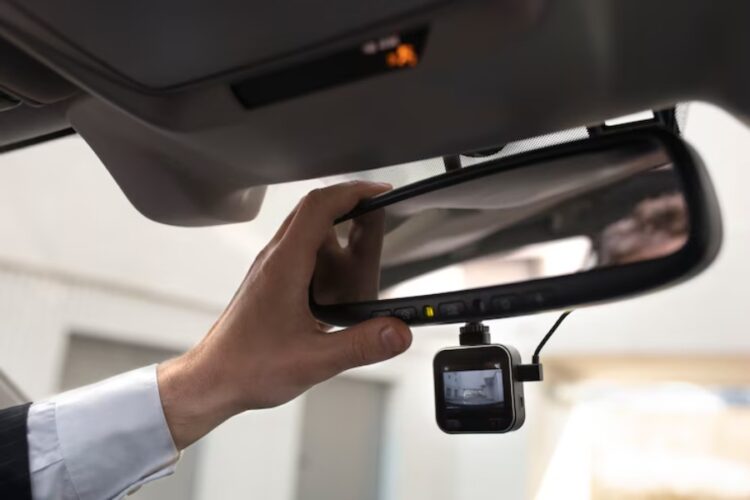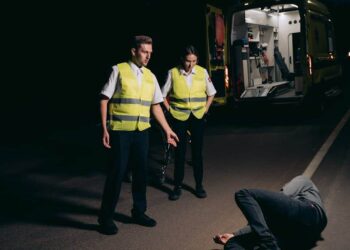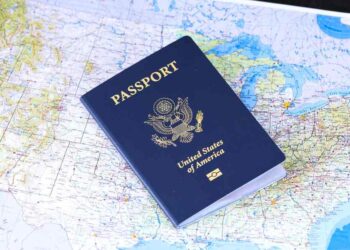Yes, dash cam footage can be used as legal evidence in accident claims when it meets certain legal and technical conditions. It provides clear, unbiased video proof of how the accident happened and who was responsible.
Courts accept dash cam footage if it is original, untampered, and supported by a certificate under digital evidence laws. Insurance companies and lawyers often use it to validate claims, assign fault, or disprove false accusations.
The footage must be relevant to the case, recorded legally, and captured by a working dash cam during regular use. When submitted correctly, it becomes a strong tool that increases the chance of a fair outcome in legal disputes or insurance settlements.
What Are Dash Cam Laws in the USA?
Dash cam laws in the USA explain where cameras can be installed and how recordings must be handled. These laws aim to balance driver safety with the privacy rights of passengers and others on the road.
Dash Cam Obstruction Laws
Obstruction laws are rules that prevent dash cams from blocking the driver’s field of vision. States such as California, New York, and Minnesota require the camera to be placed in approved areas like behind the rearview mirror or at the bottom corners of the windshield.
Improper placement can lead to traffic violations and may result in the footage being rejected as legal evidence. To avoid legal issues, the device must be installed in a way that does not interfere with safe driving.
Dash Cam Privacy and Audio Recording Laws
Privacy laws control how audio recordings are made inside the vehicle and vary depending on the state. One-party consent states like Texas allow recording if at least one person in the conversation agrees, while two-party consent states like California and Pennsylvania require permission from everyone involved.
Recording without proper consent in two-party states can break privacy laws and make the footage illegal. To use dash cam footage safely and lawfully, drivers must follow the specific audio recording rules in their state.
Is Dash Cam Footage Admissible in Court?
Yes, dash cam footage is admissible in court under the Federal Rules of Evidence and individual state rules when it meets specific legal criteria.
5 Admissibility Requirements:
- Relevance: Footage must directly pertain to the case facts.
- Authenticity: Evidence must be verifiably unaltered and traceable to the event.
- Chain of Custody: All handling of footage must be documented.
- Foundation: The submitter must establish how and when the video was recorded.
- No Legal Violations: Recording must comply with federal and state wiretap laws.
Courts admit footage when presented with a credible witness who can testify to the footage’s origin, accuracy, and context.
How Does Dash Cam Footage Support Accident Claims?
Dash cam footage strengthens accident claims by documenting exactly what unfolded on the road. In situations where memory fails or stories conflict, the camera captures what words often can’t.
Proves Liability
The footage shows key moments like sudden swerves, ignored signals, or failure to yield. These visual cues make it easier to pinpoint who caused the crash.
Disputes Fabricated Claims
When someone exaggerates injuries or invents details, the recording tells a different story. It acts as a safeguard against false narratives entering the claim.
Assists Police Reports
Officers reviewing the footage gain a clearer understanding of how the accident happened. It fills the gaps that written statements or crash diagrams sometimes leave behind.
Speeds Up Insurance Processing
Claims backed by visual evidence don’t sit long in review queues. Adjusters can verify what happened without chasing down conflicting reports.
Prevents Fraud
Dash cams expose staged accidents and setups designed to trigger false claims. That kind of evidence can stop fraud before it even reaches court or an insurer’s desk.
Which Types of Accidents Benefit Most from Dash Cam Evidence?
Dash cam footage becomes especially valuable in accident claims where fault is contested or evidence is limited. Certain types of crashes reveal clear patterns on video that help clarify what really happened.
Rear-End Collisions
The footage often shows the distance between vehicles before impact and whether the trailing driver had time to react. It removes doubt in situations where both parties claim the other stopped too quickly.
Intersection Crashes
Dash cams capture whether a driver ran a red light or turned against oncoming traffic. These moments are critical in determining who violated traffic signals.
Side Swipes
When a driver drifts into another lane without signaling, dash cam video often catches it clearly. It helps prove fault when sides of vehicles are damaged and both drivers deny responsibility.
Hit-and-Runs
Footage can reveal the fleeing vehicle’s license plate, color, and model. That data is often the only lead when the responsible driver leaves the scene.
Road Rage Incidents
The camera picks up aggressive maneuvers, sudden stops, and verbal threats if audio is enabled. This helps prove intent or escalation in confrontational scenarios.
T-Bone Accidents
Video from a dash cam can confirm which car had the green light or right-of-way. That clarity becomes crucial in side-impact collisions at busy intersections.
What Are the Limitations of Dash Cam Footage?
While dash cams offer strong support in accident claims, not all footage meets the standards for legal or insurance use. Certain technical or legal issues can reduce its effectiveness or make it entirely inadmissible.
Poor Video Quality
Footage that’s blurry, grainy, or too dark to see clearly adds little value. Low resolution or glare can make key details like license plates or traffic signals unreadable.
Obstructed Views
If the lens is blocked by objects on the dashboard or mounted incorrectly, the footage may miss the incident entirely. Poor placement undermines its reliability in critical moments.
Tampered Files
Edited or trimmed video clips can be challenged or thrown out in court. Authenticity depends on submitting unaltered footage from the original source.
Lack of Metadata
Missing time stamps, GPS coordinates, or speed data weakens the video’s credibility. Without this context, the footage becomes easier to dispute.
Illegal Recording
Audio recorded without consent in states that require it can violate wiretap laws. In those cases, the footage may be excluded or used against the person who recorded it.
What Steps Make Dash Cam Footage Legally Useful?
For dash cam footage to hold weight in a legal claim, it must be handled with care from the moment of capture. Following proper procedures ensures the evidence remains admissible and trustworthy.
Install Lawfully
Mount the camera where it doesn’t obstruct the driver’s view and complies with your state’s regulations. Improper placement could lead to footage being dismissed or cited as a safety violation.
Use High-Resolution Models
Choose a dash cam with gps that records in full HD and includes night vision and GPS tracking. Clear visuals and accurate data make the footage more persuasive in court or with insurers.
Capture Metadata
Enable features that log time, speed, and location during the recording. These embedded details help verify when and where the event took place.
Save Recordings Quickly
Copy the footage soon after the incident to prevent automatic overwrite. Delays in saving can erase key moments and weaken your claim.
Avoid Altering Video
Keep the footage in its original form without edits, cropping, or enhancements. Any signs of tampering can cause immediate rejection by the court.
Comply with Consent Laws
In states with two-party consent laws, disable in-cabin audio or inform passengers beforehand. Recording conversations illegally can render the video unusable and create legal risk.
Record Custody Documentation
Track who accessed the footage and when, keeping a written or digital log. A clear chain of custody strengthens authenticity and supports admissibility.
Back Up on Secure Storage
Save files to encrypted SD cards, hard drives, or cloud platforms to avoid loss or corruption. Reliable storage protects your evidence from accidental deletion or technical failure.
When Do Courts Reject Dash Cam Footage?
Courts reject dash cam footage when:
- Recording was made in violation of consent laws.
- No witness can authenticate the footage origin.
- The file is corrupted or shows signs of tampering.
- The content lacks direct relevance to the claim.
- No chain of custody records exist.
Conclusion
Dash cam footage has become a powerful tool in accident claims by providing clear, objective evidence that helps establish fault and protect drivers. When handled correctly, it strengthens legal arguments, supports insurance claims, and deters fraudulent behavior.
Its legal value depends on compliance with state laws, proper installation, and the integrity of the recording. By following the right steps from setup to submission, drivers increase the chances of their footage being accepted and making a meaningful impact on the outcome of their case.










